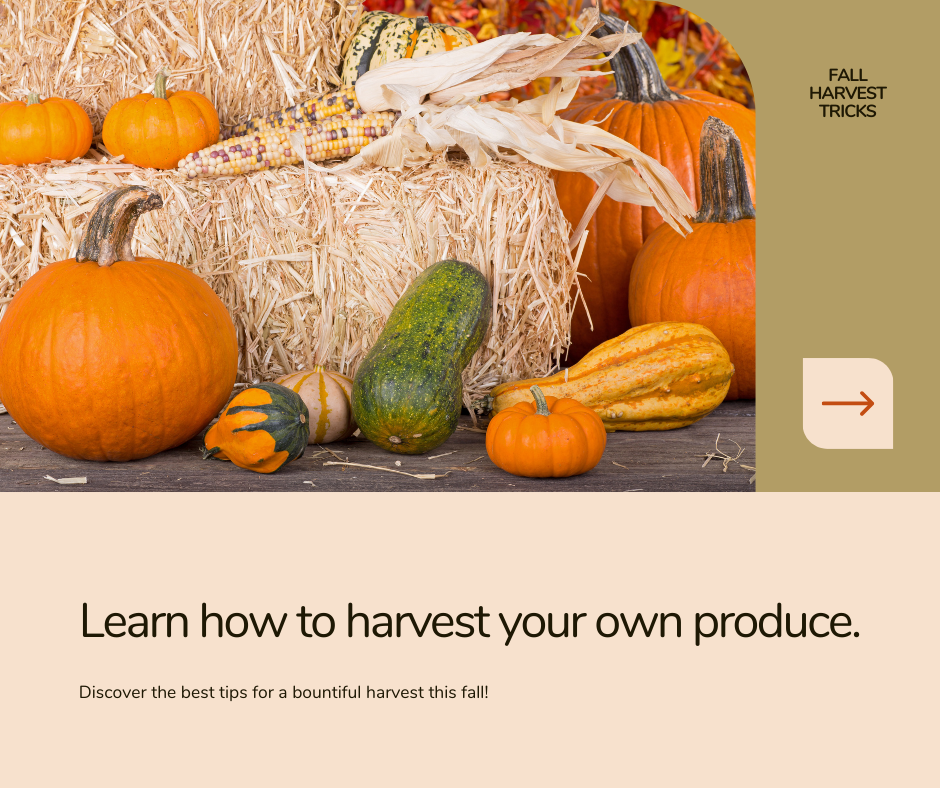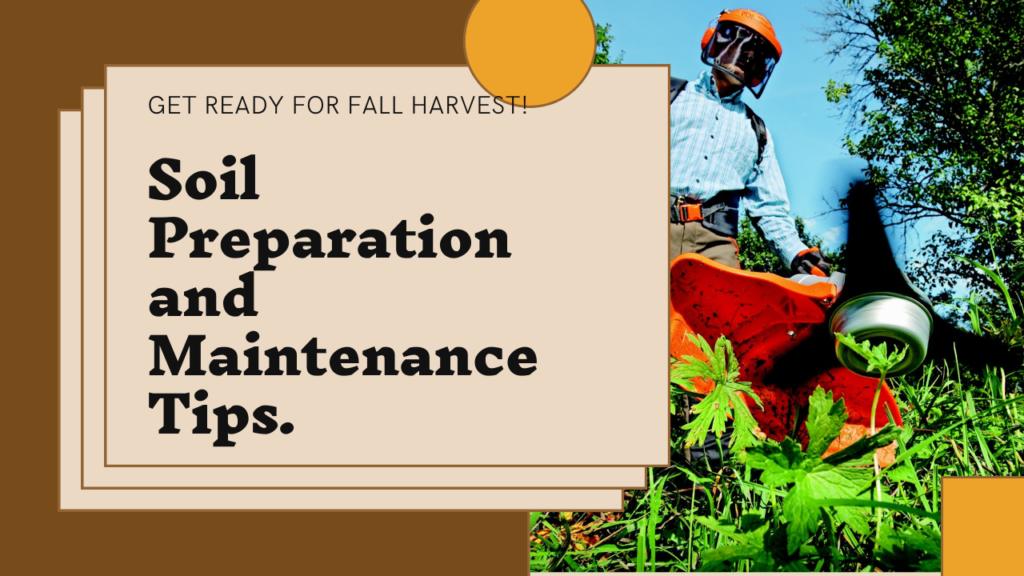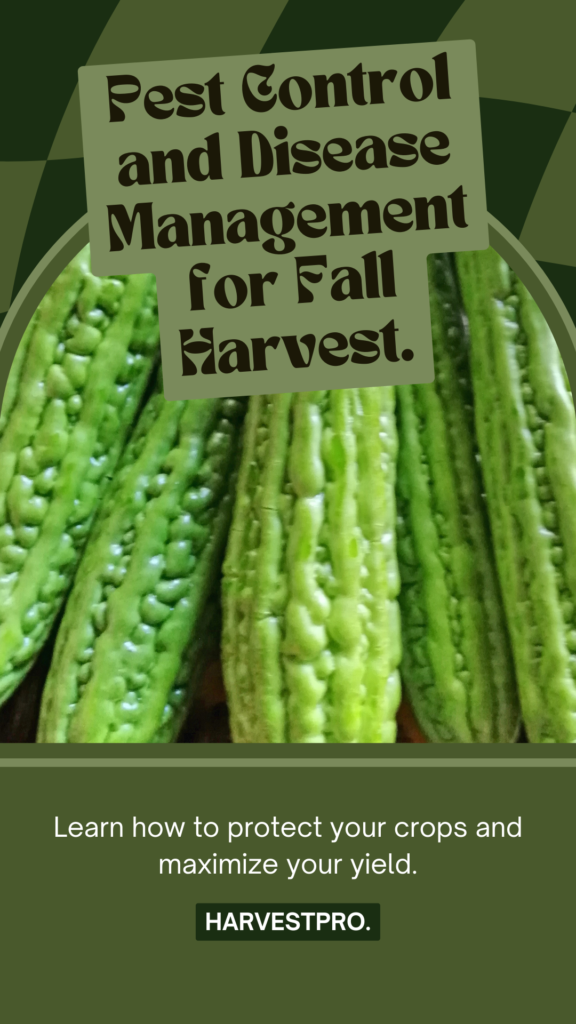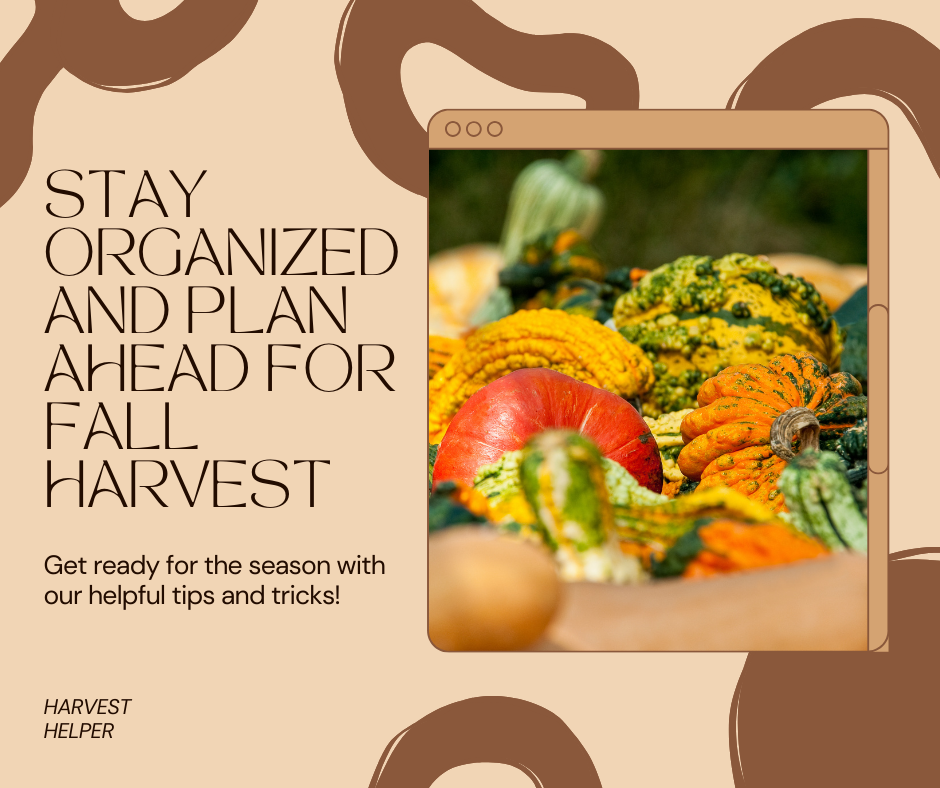
Welcome to our guide on fall harvest tricks! As the leaves begin to change colors and the air turns crisp, it’s time to prepare for a bountiful season of gardening. Whether you’re a seasoned gardener or a beginner, these efficient fall harvest methods will help you make the most of this abundant time of year.
From preparing your soil to storing your produce, we’ll provide you with expert tips and the essential tools needed to ensure a successful harvest. With our guidance, you’ll be well-equipped to navigate the challenges and reap the rewards of a thriving fall garden.
Key Takeaways:
- Follow expert tips and utilize the right tools to maximize your fall harvest.
- Proper soil preparation is essential for a successful season.
- Timing is crucial when choosing the right crops for fall harvest.
- Invest in essential tools to improve efficiency during harvest.
- Ensure soil health and ongoing maintenance for optimal yield.
Importance of Fall Harvest Preparation
Before you start reaping the rewards of your fall harvest, it’s crucial to recognize the importance of proper preparation. Taking the time to prepare your garden and plan for a diverse and sustainable harvest can significantly enhance your overall success. Here’s why fall harvest preparation is vital for a fruitful season:
Planning a Diverse and Sustainable Harvest
By planning ahead and selecting a variety of crops, you can ensure a diverse and nutritious harvest. Diversifying your crops not only provides a range of flavors but also helps maintain soil health and reduce the risk of pests and diseases. Furthermore, opting for sustainable practices like crop rotation and companion planting promotes natural pest control and supports long-term soil fertility.
Strategic Crop Selection and Planning
Choosing the right crops for your fall harvest is essential for maximizing yield and efficiency. Consider factors like the climate, growing season, and your preferences when selecting crops that thrive in your region during the fall. Additionally, plan your planting schedule wisely to optimize space and resources, ensuring a continuous supply of fresh produce throughout the season.
Timing in Fall Harvest
Timing is a critical factor in the success of your fall harvest. The right timing can significantly impact the quality and yield of your crops. Understanding the importance of timing and learning how to choose the right crops for fall harvest are key to optimizing your results.
When it comes to fall harvest, different crops have different maturity periods, and planting them at the right time ensures that you can harvest them at their peak. The timing determines the flavor, texture, and nutritional value of your produce.
Choosing the right crops for fall harvest involves considering their growth rate and the length of the fall season in your region. It’s important to select crops that have enough time to mature before the first frost arrives. This way, you can maximize your yield and ensure the highest quality harvest.
Some crops, like leafy greens, radishes, and herbs, have shorter maturation periods and can be planted closer to the first frost date. On the other hand, crops such as pumpkins, winter squash, and Brussels sprouts require a longer growing season and should be planted earlier to allow sufficient time for growth and maturity.
To help you determine the best timing for your fall harvest, consult local gardening resources or seek advice from experienced gardeners in your community. They can provide valuable insights on the ideal planting dates for specific crops in your area.
“Timing is everything in gardening. Planting too early or too late can make all the difference in the success of your fall harvest.” – Jane Smith, Master Gardener
Planning is crucial when it comes to fall harvest. By understanding the importance of timing and carefully selecting the right crops, you can ensure a bountiful and delicious harvest.
Choosing the Right Crops for Fall Harvest
When choosing crops for your fall harvest, consider the following factors:
- Growth rate and maturity period: Opt for crops that can reach maturity within the available timeframe.
- Climate and frost dates: Take into account your region’s average first frost date and select crops that can withstand cooler temperatures.
- Preference and availability: Choose crops that you enjoy eating and that are readily available as seeds or transplants for fall planting.
- Succession planting: Consider utilizing succession planting techniques to extend your harvest by staggering plantings of the same crop at different intervals.
By strategically planning your crop selection and understanding the importance of timing, you can make the most of your fall harvest and savor the flavors of the season.
Essential Tools for Efficient Fall Harvest
When it comes to achieving an efficient and bountiful fall harvest, having the right tools is essential. These tools can save you time and effort, ensuring a smooth and productive harvest season. Whether you’re a seasoned gardener or just starting out, equipping yourself with the right tools will set you up for success. Here are some must-have tools that every gardener should consider:
1. High-Quality Garden Fork
A garden fork is a versatile tool that can be used for a variety of tasks, such as loosening soil, turning compost, and removing weeds. Look for a sturdy and durable garden fork that can withstand the demands of fall harvesting.
2. Pruning Shears
Pruning shears are indispensable for maintaining the health and productivity of your plants. Use them to remove dead or damaged branches, trim overgrown foliage, and harvest your crops with precision. Invest in a high-quality pair of pruning shears that will last for years.
3. Garden Scissors
Garden scissors are smaller and more agile than pruning shears, making them perfect for delicate tasks like harvesting herbs, flowers, and fruits. Opt for a pair with stainless steel blades for clean cuts and ergonomic handles for comfortable use.
4. Hand Trowel
A hand trowel is a must-have tool for planting and transplanting seedlings, as well as digging small holes for bulbs and herbaceous plants. Choose a sturdy hand trowel with a comfortable grip to make your gardening tasks easier.
5. Garden Rake
A garden rake is essential for leveling the soil, removing debris, and breaking up clumps. Look for a rake with strong tines that can withstand heavy use and is suitable for both light and heavy soil types.
6. Harvesting Knife
A sharp and reliable harvesting knife is crucial for efficiently harvesting root vegetables, melons, and other crops that require precision cuts. Look for a knife with a stainless steel blade and a comfortable handle for effortless harvesting.
7. Wheelbarrow or Garden Cart
A wheelbarrow or garden cart is indispensable for transporting harvested crops, tools, and soil amendments. Look for a sturdy and lightweight option with a comfortable handle and proper wheel size for easy maneuvering.
8. Garden Gloves
Protect your hands from thorns, rough surfaces, and soil-borne pathogens with a pair of high-quality garden gloves. Look for gloves that fit well, provide ample dexterity, and offer protection without sacrificing comfort.
Having these essential tools in your arsenal will make your fall harvest more efficient and enjoyable. Each tool serves a specific purpose and contributes to the overall productivity of your garden. Invest in durable and high-quality tools, and they will become invaluable assets season after season.
Now that you’re armed with the right tools, let’s move on to the next section, where we’ll explore the importance of soil preparation and maintenance for a successful fall harvest.
Soil Preparation and Maintenance

Healthy soil is the cornerstone of a successful fall harvest. Proper soil preparation and ongoing maintenance are essential for optimizing your yield and ensuring the health of your crops. By implementing effective techniques specifically tailored for the fall season, you can create an ideal environment for your plants to thrive.
To prepare your soil for the fall harvest, consider the following techniques:
- Clearing and amending the soil: Start by clearing away any debris or weeds from your garden beds. Then, amend the soil by incorporating organic matter such as compost or well-aged manure. This improves soil structure, enhances nutrient availability, and promotes beneficial microbial activity.
- Testing and adjusting soil pH: Conduct a soil pH test to determine if your soil is within the optimal range for your crops. If the pH is too high or too low, adjust it accordingly by adding lime to raise the pH or sulfur to lower it. This ensures that your plants can absorb nutrients effectively.
- Applying organic fertilizers: Use organic fertilizers or slow-release granular fertilizers to provide the necessary nutrients for your plants. Follow the recommended application rates and timings to avoid overfertilization, which can lead to nutrient imbalances and environmental pollution.
- Implementing crop rotation: Practice crop rotation to reduce the risk of pest and disease buildup. By rotating your crops, you disrupt the life cycles of insects and pathogens, promoting a more balanced ecosystem in your garden.
In addition to soil preparation, maintaining the health of your soil is crucial for long-term productivity. Regular soil maintenance practices include:
- Watering appropriately: Provide your crops with consistent moisture by watering deeply and infrequently. This encourages the development of deep root systems and helps mitigate water stress.
- Mulching: Apply a layer of organic mulch around your plants to conserve soil moisture, suppress weeds, and regulate soil temperature. Choose mulch materials that break down slowly, such as straw or wood chips.
- Weed management: Regularly remove weeds from your garden beds to prevent competition for nutrients and water. Use hand-weeding, hoeing, or mulching techniques to keep weed growth under control.
- Monitoring and addressing nutrient deficiencies: Monitor your plants for signs of nutrient deficiencies, such as yellowing leaves or stunted growth. Address deficiencies promptly by applying appropriate organic fertilizers or soil amendments.
Remember, investing time and effort into soil preparation and maintenance will pay off with healthier plants, increased yields, and an overall more productive fall harvest.
The Benefits of Soil Health and Maintenance
“Healthy soil is the foundation for healthy plants and a bountiful harvest.”
Soil health is paramount when it comes to growing robust and productive crops. By prioritizing soil health and implementing proper maintenance practices, you can benefit from:
- Improved nutrient uptake: Healthy soil provides an optimal balance of nutrients, allowing plants to readily absorb what they need for growth and development.
- Enhanced water holding capacity: Well-maintained soil retains moisture more effectively, reducing the risk of water stress and ensuring consistent hydration for your plants.
- Greater pest and disease resistance: Healthy soil fosters a diverse and balanced ecosystem, promoting the presence of beneficial organisms that can control pests and suppress diseases.
- Increased root development: Proper soil preparation and maintenance result in improved soil structure, allowing roots to penetrate deeply and access essential water and nutrients.
- Sustainable gardening practices: By maintaining soil health, you contribute to the long-term sustainability of your garden, minimizing the need for synthetic fertilizers and pesticides.
| Soil Preparation Techniques for Fall Harvest | Importance of Soil Health and Maintenance |
|---|---|
| 1. Clearing and amending the soil | 1. Improved nutrient uptake |
| 2. Testing and adjusting soil pH | 2. Enhanced water holding capacity |
| 3. Applying organic fertilizers | 3. Greater pest and disease resistance |
| 4. Implementing crop rotation | 4. Increased root development |
Pest Control and Disease Management

Protecting your crops from pests and diseases is essential during the fall harvest. Implementing effective pest control methods and taking preventative measures can help ensure the health and productivity of your plants. By staying proactive and addressing potential issues early on, you can safeguard your yield and maximize the success of your fall harvest.
Effective Pest Control Methods for Fall Harvest
When it comes to pest control, prevention is key. By following these effective methods, you can keep pests at bay and maintain the health of your crops:
- Practice crop rotation: Rotating your crops each year can help reduce the likelihood of pest infestation. Different crops attract different pests, so by changing their location, you disrupt pest breeding cycles and minimize their impact.
- Use physical barriers: Install protective barriers, such as row covers or nets, to physically block pests from reaching your crops. This method is particularly useful for keeping out flying insects and larger pests.
- Encourage beneficial insects: Some insects are natural predators of common garden pests. Planting flowers and herbs that attract beneficial insects, such as ladybugs and lacewings, can help keep pest populations in check.
- Apply organic insecticides: If necessary, use organic insecticides to target specific pests without harming beneficial insects or pollinators. Organic options include neem oil, insecticidal soap, and diatomaceous earth.
Preventative Measures for Common Crop Diseases
Crop diseases can quickly spread and devastate your fall harvest. By implementing preventative measures, you can minimize the risk of disease and protect your plants:
- Select disease-resistant varieties: When choosing which crops to plant, opt for varieties that have proven resistance to common diseases in your area.
- Practice good sanitation: Remove any diseased plant material from the garden, including fallen leaves or infected fruits. Properly dispose of or compost the material away from your growing area.
- Water plants at the base: Avoid wetting the foliage when watering your plants. Moisture on leaves can create an environment conducive to disease development.
- Maintain proper spacing: Providing adequate spacing between plants promotes air circulation and reduces the likelihood of disease spread.
- Apply organic fungicides: Organic fungicides, such as copper-based sprays, can be used as a preventative measure to protect plants from fungal diseases.
“Implementing effective pest control methods and taking preventative measures can help ensure the health and productivity of your plants.”
By integrating these pest control and disease management strategies into your fall harvest routine, you can create an environment that maximizes crop health and minimizes the risk of infestation or disease. Stay vigilant, monitor your plants regularly, and take action at the first signs of pest or disease presence.
Harvesting and Storage Tips
Harvesting your fall crops at the right time is essential for maximizing flavor and nutritional value. Follow these harvesting best practices for fall crops to ensure optimal results:
- Observe and assess: Regularly check your crops for signs of maturity such as color, size, and texture. Harvest when they are at their peak ripeness to enjoy the best flavors.
- Timing matters: Harvest leafy greens, herbs, and root crops early in the day when they are crisp and packed with nutrients. Avoid harvesting during hot, sunny hours as this can lead to wilting and reduced quality.
- Use sharp tools: When harvesting, use clean and sharp pruners or shears to minimize damage to the plant and promote faster healing. Blunt tools can crush or tear the crop, making it more susceptible to spoilage.
- Handle with care: Treat your harvest with delicacy to prevent bruising or damage. Gently place the produce in a basket or container, avoiding unnecessary squeezing or piling on top of each other.
- Remove damaged or diseased crops: Inspect your crops during harvest and remove any damaged or diseased fruits and vegetables. This helps prevent the spread of diseases and ensures the longevity of your stored produce.
Once you’ve successfully harvested your fall crops, it’s time to focus on proper storage techniques to extend their shelf life. Follow these tips to keep your produce fresh and delicious:
- Clean and dry: Before storing, gently wash your produce to remove any dirt or debris. Dry them thoroughly to prevent the growth of mold or bacteria.
- Choose the right storage location: Different crops have different storage requirements. Some fruits and vegetables prefer cool, dark, and dry conditions, while others thrive in colder temperatures or need to be stored in the refrigerator. Understand the specific storage needs of your crops to maintain their freshness.
- Separate and ventilate: Prevent spoilage by storing your crops in separate containers or bags. This prevents the release of ethylene gas, which can accelerate ripening and spoilage. Additionally, provide adequate ventilation to avoid the buildup of moisture and reduce the risk of rotting.
- Monitor regularly: Check your stored crops regularly for any signs of spoilage or decay. Remove any damaged produce to prevent the spread of mold or pests.
- Consider preserving techniques: If you have an abundance of produce, consider preserving methods such as canning, freezing, or dehydrating to extend their shelf life even further.
By employing effective harvesting and storage techniques, you can savor the flavors of your fall crops well beyond the harvest season. Take the time to harvest at the peak of ripeness and store your produce properly to enjoy the taste of your hard work throughout the year.
Maximizing Yield with Crop Selection
When it comes to your fall harvest, selecting the right crops is key to maximizing your overall yield. By choosing wisely and employing rotation techniques, you can ensure a diverse and thriving harvest that meets your specific needs. So let’s dive in and explore some strategies to help you make the most of your crop selection!
Understanding Your Soil and Climate
Before making any crop selections, it’s crucial to have a solid understanding of your soil type and climate. Different crops have varying requirements when it comes to soil fertility, pH levels, and sunlight exposure. By analyzing your soil and climate conditions, you can identify the crops that are best suited for your garden.
Consider conducting soil tests to determine the nutrient levels and pH of your soil. This information will guide your crop selection process and help you choose plants that will thrive in your specific conditions. Additionally, research the average temperatures, frost dates, and rainfall patterns in your region to identify crops that are well-suited for your climate.
Choosing Complementary Crops
One effective strategy for maximizing yield is to select complementary crops that work well together. Some plants naturally support each other’s growth by repelling pests, improving soil health, or providing shade. This concept, known as companion planting, can help boost your overall harvest and reduce the risk of pests and diseases.
For example, planting marigolds alongside your vegetable beds can help repel harmful insects and improve pollination. Similarly, intercropping legumes, such as beans or peas, with leafy greens can enhance soil fertility by fixing nitrogen. Take the time to research companion planting combinations and consider implementing them in your garden to increase your crop yield.
Implementing Crop Rotation
Crop rotation is another valuable technique for maximizing yield and maintaining soil health. By rotating your crops each year, you can break pest cycles, reduce soil-borne diseases, and replenish essential nutrients. This practice also helps prevent the depletion of specific nutrients, ensuring long-term sustainability in your garden.
To implement crop rotation, divide your garden into different bed sections and assign each section to a specific plant family. For example, one bed can be dedicated to leafy greens one year, followed by legumes the next year, and then root vegetables in the subsequent year. This rotation prevents any one crop family from depleting the soil and minimizes the risk of pests and diseases specific to that crop.
| Crop Family | Examples |
|---|---|
| Leafy Greens | Spinach, lettuce, kale |
| Legumes | Beans, peas, lentils |
| Root Vegetables | Carrots, beets, radishes |
| Solanaceae | Tomatoes, peppers, eggplants |
Extending the Harvest Season
Wouldn’t it be great to extend the fall harvest season and enjoy fresh produce for longer? You’re in luck! In this section, we’ll share some valuable tips and techniques to help you extend the harvest season. By implementing these strategies, you’ll be able to savor your homegrown produce well into the fall and even winter months.
First and foremost, consider utilizing protective covers to shield your crops from frost and cold temperatures. Row covers, cloches, and cold frames are excellent options to create a microclimate that protects your plants from harsh weather conditions. These covers act as cozy blankets, trapping heat and keeping your crops warm even as the temperature drops.
Additionally, companion planting can work wonders in extending your harvest. By interplanting crops with varying maturity rates, you can stagger the harvest and continuously enjoy fresh produce throughout the season. For example, plant fast-growing lettuce between slower-growing tomatoes, allowing you to harvest lettuce while waiting for the tomatoes to ripen.
Pro tip: When selecting crops for companion planting, consider which plants have similar growing requirements and are compatible in terms of sunlight and soil conditions.
Another effective technique to extend the harvest season is succession planting. Rather than planting all of your crops at once, stagger the plantings at regular intervals. This ensures a continuous supply of fresh produce as mature plants are harvested while younger ones are growing. By planning ahead and spacing out your planting schedule, you can enjoy a prolonged harvest.
Succession Planting Schedule:
| Crop | Planting Date | Harvest Date |
|---|---|---|
| Lettuce | August 1 | September 15 |
| Spinach | August 15 | September 30 |
| Radishes | August 30 | October 10 |
Lastly, don’t forget about the importance of proper crop storage. Some fruits and vegetables can be stored for extended periods, allowing you to enjoy your harvest well beyond the typical season. Examples of crops with excellent storage capabilities include winter squash, potatoes, onions, and apples. Be sure to research the optimal storage conditions for each specific crop to ensure their longevity.
To conclude, with these tips and techniques, you can extend the fall harvest season and continue to savor your homegrown produce well into the colder months. By implementing protective covers, practicing companion planting and succession planting, and storing your crops properly, you’ll be able to enjoy the bounties of your garden for a longer period. Embrace these strategies and reap the rewards of an extended harvest!
Sustainable Harvesting Practices
As a responsible gardener, it’s essential to practice sustainable harvesting techniques. By adopting eco-friendly methods for fall harvest, you can promote biodiversity, conserve resources, and prioritize the long-term health of your garden ecosystem.
One important aspect of sustainable harvesting is understanding the natural growth cycle of your plants and harvesting them at the right time. This ensures that you obtain the best flavor, texture, and nutritional value from your crops. Additionally, proper harvesting techniques help to minimize waste and extend the life of your plants.
Harvesting Tips for Sustainable Gardening
- Harvest selectively: Instead of harvesting all the mature fruits or vegetables at once, pick only what you need. This allows the remaining produce to continue ripening, resulting in a longer harvest period.
- Support plant regrowth: When harvesting leafy greens or herbs, avoid cutting the entire plant. Instead, remove only a few outer leaves or sprigs, allowing the plant to continue growing and producing.
- Use gentle handling techniques: Handle harvested crops with care to avoid bruising or damaging them. Use sharp and clean tools to minimize trauma to the plants.
- Optimize storage conditions: Properly store your harvested produce in cool, dry, and well-ventilated spaces to extend its shelf life. Consider using natural preservation methods like canning or freezing to enjoy your homegrown produce throughout the year.
By implementing these sustainable harvesting practices, you not only contribute to the health of your garden but also reduce your environmental footprint. Embrace the rewards of responsible gardening and enjoy the satisfaction of growing and consuming your own fresh, organic produce.
Staying Organized and Planning Ahead

Staying organized and planning ahead is key to ensuring a successful fall harvest. With the right strategies and tips, you can stay on top of your tasks and make the most out of this harvest season. From creating a planting schedule to keeping track of yields, these organization tips will help you stay efficient and stress-free.
One effective way to stay organized is by creating a planting schedule. Begin by determining the ideal planting dates for the specific crops you plan to harvest in the fall. Research the recommended planting times for each crop based on your region and climate. Create a calendar or use a gardening app to map out the planting dates, ensuring that you have a clear overview of what needs to be planted and when.
To further streamline your planning process, consider grouping crops with similar care requirements. This will simplify tasks such as watering, fertilizing, and pest control. By organizing your crops based on their needs, you can efficiently manage your garden and save time.
Another essential aspect of staying organized is keeping track of your yields. Use a gardening journal or a spreadsheet to record the quantity and quality of each crop you harvest. This will not only help you assess your overall success but also provide valuable insights for future planting seasons. Additionally, tracking your yields allows you to identify any trends or issues, enabling you to make informed decisions and adjustments in your garden.
“By staying organized and planning ahead, you can optimize your fall harvest and make the most out of your garden’s potential.” – Gardening Enthusiast
Furthermore, consider utilizing garden organization tools and resources. There are various mobile apps, online platforms, and garden journals available to help you streamline your tasks and stay organized. These tools can provide reminders for essential gardening activities, offer personalized recommendations based on your garden’s specifics, and even assist in tracking your progress throughout the season.
Remember, staying organized and planning ahead not only helps you stay on top of your tasks but also allows you to make the most of your gardening experience. With proper organization and planning, you can ensure a smooth and efficient fall harvest, reaping the rewards of your hard work.
Take a look at the table below for a visual summary of the key organization tips and strategies discussed in this section:
| Organization Tips | Benefits |
|---|---|
| Create a planting schedule | Ensures timely planting and harvest |
| Group crops with similar care requirements | Simplifies maintenance tasks |
| Track yields in a journal or spreadsheet | Provides insights for future planning |
| Utilize garden organization tools and resources | Streamlines tasks and offers personalized guidance |
FAQ
Q. Why is fall harvest preparation important?
A. Fall harvest preparation is crucial for a successful and sustainable harvest. It allows you to plan a diverse crop selection, ensure optimal timing, and prepare the soil for optimal growth.
Q. How does timing affect fall harvest success?
A. Timing plays a crucial role in fall harvest success. Choosing the right crops for the season and harvesting them at their peak ensures maximum yield and quality.
Q. What are the essential tools for efficient fall harvest?
A. Essential tools for efficient fall harvest include garden forks, pruners, shovels, wheelbarrows, and harvest baskets. These tools can help you save time and effort while ensuring a smooth and productive harvest season.
Q. How can I prepare and maintain my soil for fall harvest?
A. To prepare your soil for fall harvest, you can use techniques like tilling, soil amendment with compost or organic fertilizer, and practicing crop rotation. Ongoing soil maintenance involves regular testing, watering, and weed control.
Q. What are effective pest control methods for fall harvest?
A. Effective pest control methods for fall harvest include using natural predators, applying organic pest control solutions, practicing crop rotation, and monitoring plants regularly for early pest detection.
Q. How can I best harvest and store my fall crops?
A. To harvest your fall crops, follow best practices such as picking them at their peak ripeness, using proper harvesting tools, and handling them with care. For storage, use techniques like cleaning, drying, and storing produce in a cool, dry, and dark place.
Conclusion
In conclusion, with the help of these fall harvest tricks, you’ll be well-equipped to have a fruitful and efficient season. By following the expert tips and utilizing the right tools, you can prepare your soil, manage pests and diseases, harvest effectively, and store your produce for long-lasting freshness.
Embrace planning and organization to maximize your yield, and remember to practice sustainability in your garden. By adopting eco-friendly methods, you can promote biodiversity, conserve resources, and ensure the long-term health of your garden ecosystem.
So get ready to enjoy the abundant rewards of a successful fall harvest! With proper preparation, meticulous care, and a little bit of patience, you’ll be delighted by the bountiful produce that graces your table. Happy gardening!
















